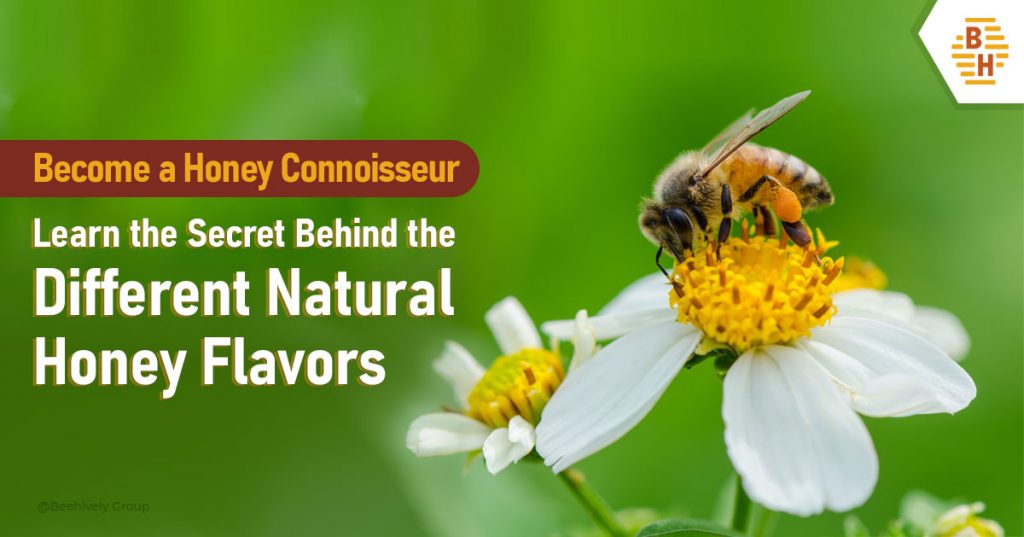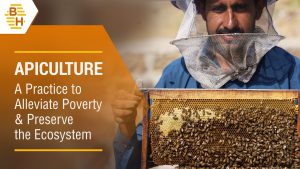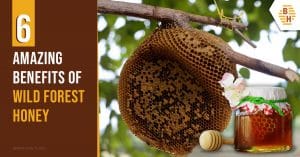Honey comes in a variety of colors and flavors, ranging from almost colorless to dark brown, depending on the source of nectar.
Honeybees cover an average radius of two miles, and the kind of flora from which they collect nectar directly affects both the flavor and color of the honey they produce. Light-colored honey has a gentler flavor, whereas dark-colored honey has a more robust flavor.
Natural honey is produced in many countries worldwide; however, the specific honey flavors come exclusively from the places based on the floral source location. For example, New Zealand is notoriously famous for offering Manuka Honey, a flavor variety solely produced by bees extracting the nectar in the Manuka Flower, a species native to south-east Australia and New Zealand.
Does all Honey Have the Same Taste?
The short answer is no. Not all honey should not taste exactly the same.
There are qualities inherent to all types of honey that give us the characteristic underlying flavor we all recognize; however when we compare the different types and flavors of honey we can discover some fascinating differences in the flavor profiles.
You may find that your generic store-bought brand offers a consistent flavor and texture every time you buy it. There is a reason for this. Large corporations want to gain the trust and business of consumers and do so by providing consistency and familiarity. The downside to this is that big brands will sacrifice quality to achieve uniformity in honey. [You can read more about the difference between pasteurized and unpasteurized honey here]
Various factors can influence the unique flavor qualities of honey produced freshly from the hive. The hive location, the flowers, and the harvest season are the primary determinants of these factors.
For reference, we like to compare good quality honey to fine wine, where the characteristics of the flavors are heavily influenced by external factors such as soil, climate, and grape variety. Just like with wine, honey flavors can be so interesting and complex that honey from hives on adjacent sides of the town might have completely different flavors.
The Flower for Flavor
Pollination is when a plant creates offspring and assures its survival and growth in subsequent seasons. When a plant pollinates, it produces a sweet sticky fluid known as ‘nectar.’ This is a type of ‘bait’ that lures insects to the plant to transfer pollen to their bodies, with a hope that the pollen will reach the plant’s stigma. Honeybees (a type of pollinator) consume this nectar and bring it to the hive along with the pollen they gather to nourish the pack. The nectar and pollen produced by the variety of flowers available to bees in their area will have varying quality.
Factors Influencing Flavors of Honey
- Hive Location: The majority of store-bought honey is a combination of several different hives and a variety of flowers. These are usually plants that are close to the hive at the time when the honey is produced. Honey buyers may come across honey branded as ‘univarietal.’ This certainly suggests that the hive was intentionally positioned in a region where a specific species of plant can be found within a two-mile radius. Such flowers will be selected for their ability to give specific flavor qualities to honey.
- Pollen and Nectar of Plants: The flavor of honey is strongly controlled by the pollen and nectar of the plants. Though the flower from which the honeybees collect pollen and nectar influences the flavor, that does not imply that the honey will taste exactly like that flower. Blueberry honey, for instance, may taste similar to wild blueberries. On the other hand, Linden tree honey doesn’t taste like linden flowers; it is instead significantly lighter in color and has a slight mint overtone.
- Tree resins: Apart from the flower nectar itself, a range of external variables can influence the flavor of honey. For instance, traces from the resin used by bees to seal the hives can sometimes end up in the honey in the form of propolis, influencing the overall taste. Propolis is obtained when bees extract tree resins to cover, seal and protect the hive against unwanted visitors or substances. The propolis resin that comes in contact with honey during harvest may introduce a light nutty or pine flavor.
Enjoy the Best Flavors of Honey with BeeHively
BeeHively Group, a premium honey supplier, offers pure, natural honey sourced from local beekeepers who use sustainable and ethical beekeeping practices. Our honey and honey products come in various flavors, including eucalyptus, acacia, neem, ajwain, litchi, multiflora, and many more.




